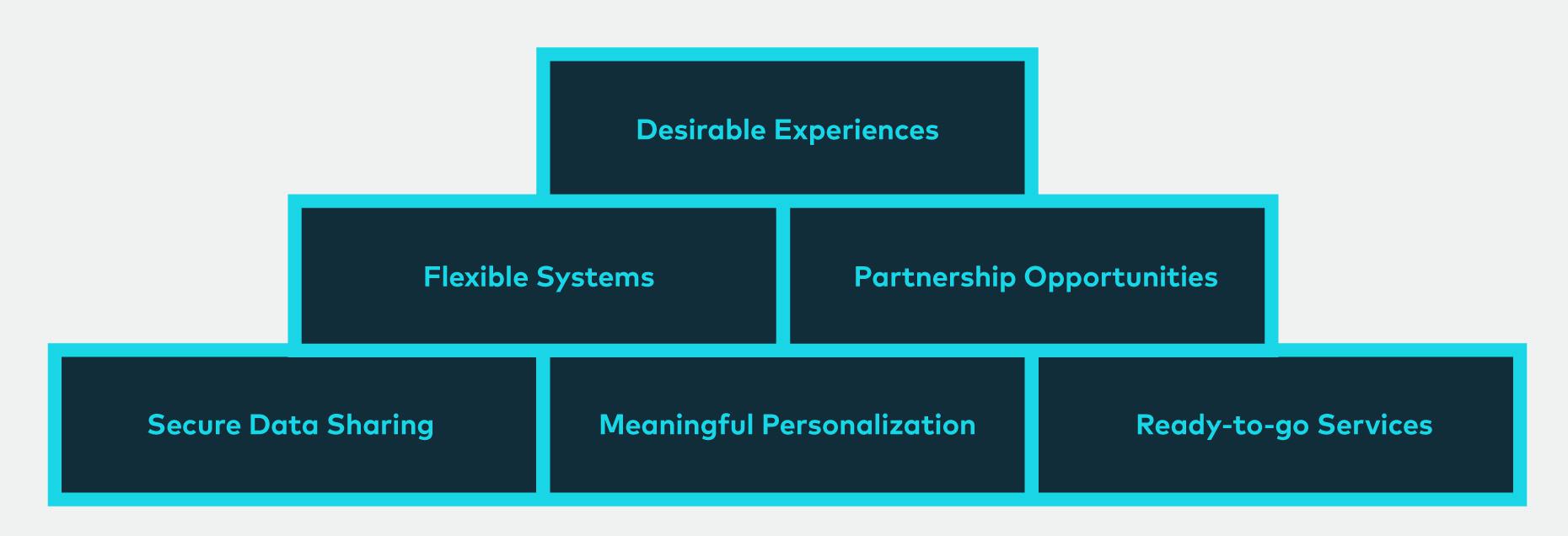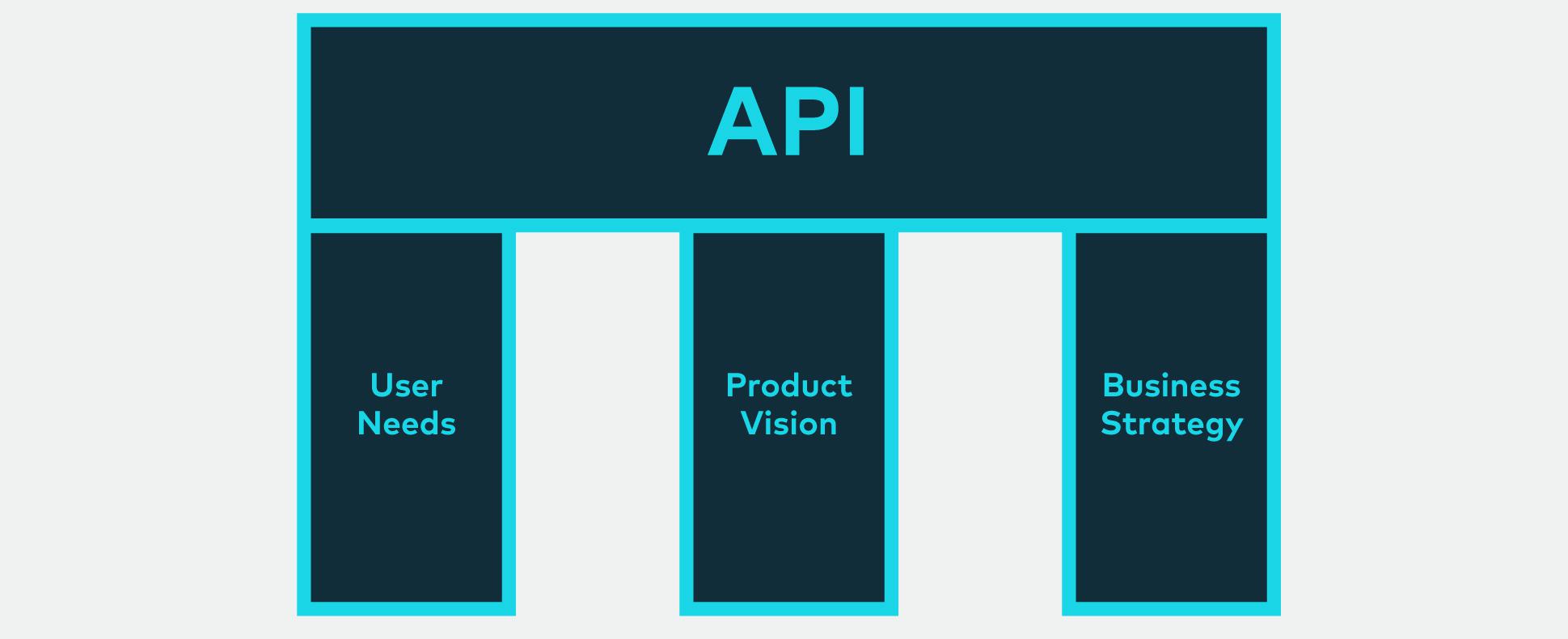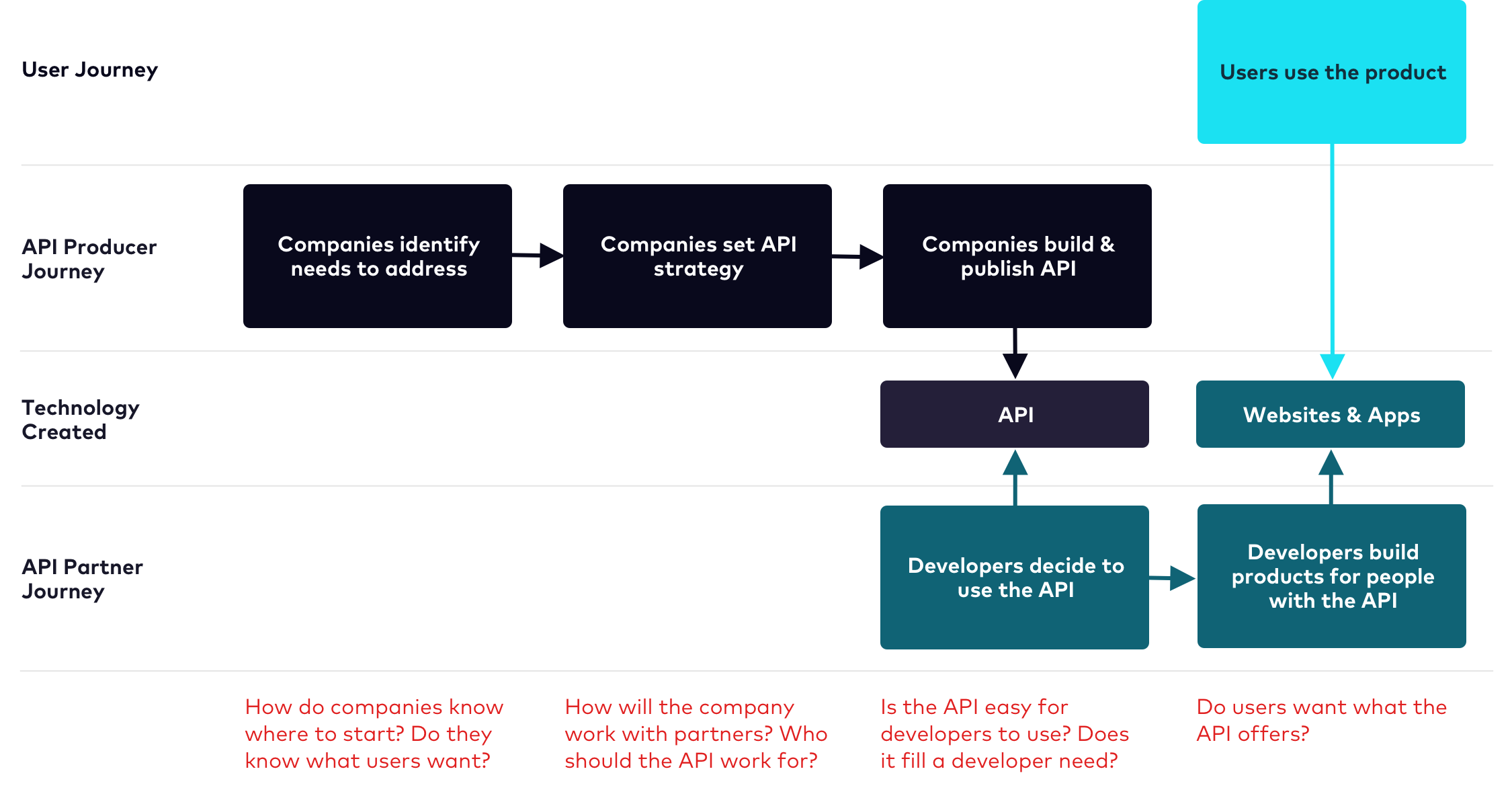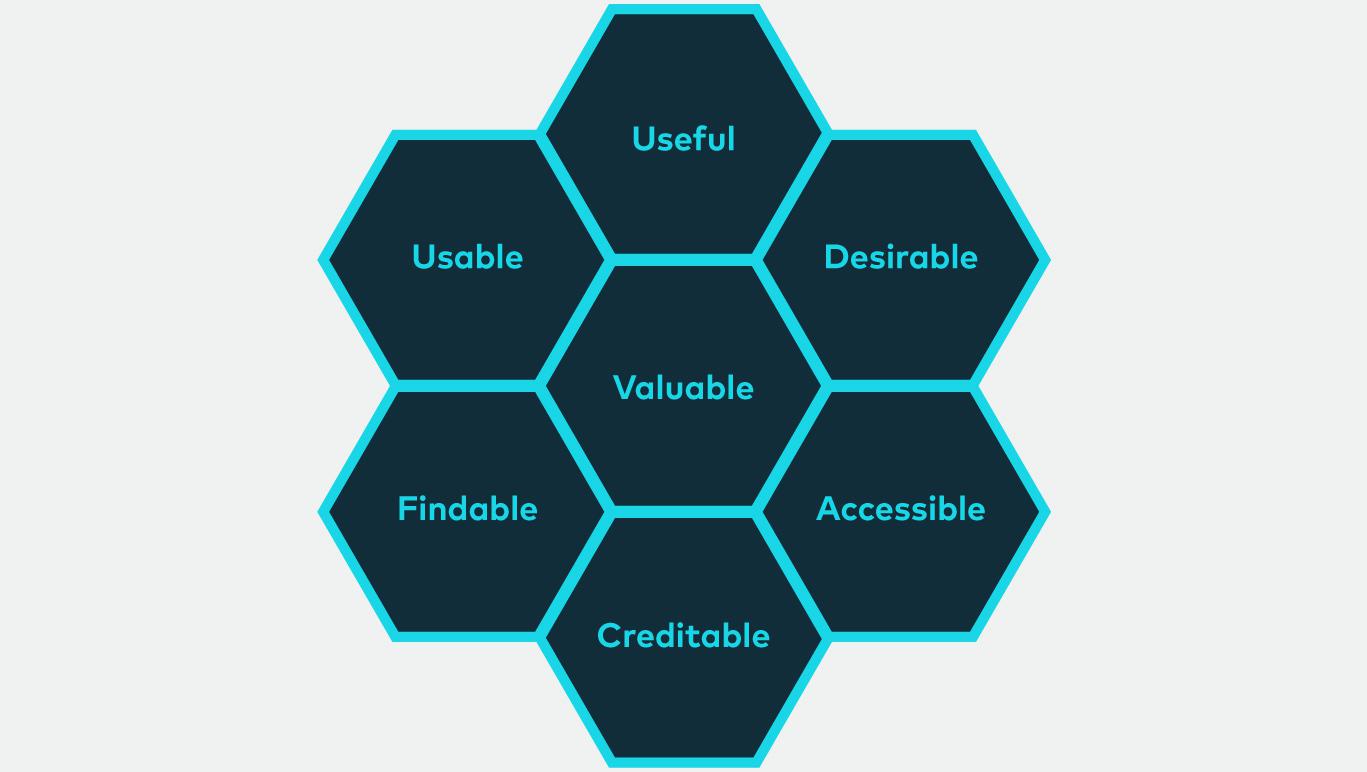
APIs
User Experiences Need Human-Centered APIs
Behind every website and app, APIs are sharing information. They know where to find data and how to deliver it to interfaces. APIs make today’s experiences possible. As APIs do more and more, how do we ensure they meet people’s needs?
Application programming interfaces, or APIs, let products communicate with other products and services. They provide flexibility while simplifying product development and maintenance. It’s easy to see APIs as valuable technical solutions, but they’re more than that.
APIs are products for people. They provide users with personalized, relevant, precise results — while making developers’ lives easier. The secret is making sure APIs offer the right, easy-to-implement services. When that happens, APIs become innovation’s building blocks.

Rethinking APIs
Talking about APIs usually goes one of two ways. Things get technical fast, or eyes start rolling. APIs are about as old as computer science. It’s no surprise that developers have strong opinions — they’re going to be the ones using them. Outside of technical circles, it’s rare to talk about APIs. Unfortunately, all too often, the bigger picture gets lost.

APIs should be an extension of business and product strategy. They provide enterprise and customer value. Limiting conversations to IT departments limits the value APIs can provide.
To reimagine APIs, think of them as a waiter in a restaurant. The waiter collects customers’ orders, brings them to the kitchen, and brings the food back to the diners’ table. Customers don’t have to understand how the kitchen works. The kitchen doesn’t need to talk to customers.

Waiters bring efficiencies and delightful moments to restaurants. They can make personalized recommendations, and even “mash-up” dishes to create things that aren’t on the menu. Because the waiter knows the kitchen’s capabilities, diners get a customized experience. APIs do the same thing.
APIs simplify user-interfaces (UIs) and back-end systems. UIs don’t have to manage complex processing or talk to databases. Back-end systems don’t have to care about presentation.
Imagining life without APIs shows how they impact user experiences. If APIs didn’t exist, our digital lives would look radically different. Partying like it’s 1999, would feel futuristic. Without APIs:
- Data is hard to find
APIs make it easy for companies to share information internally and externally. Without APIs, travel sites like Expedia wouldn’t exist. Expedia uses APIs from airlines and hotels to show availability and pricing - Personalization isn’t possible
Today’s experiences rely on APIs to share information about the user. Without APIs, Amazon couldn’t make smart product recommendations. They even offer their personalization engine to others via API - Real-time information doesn’t exist
Websites and apps rely on APIs to provide data feeds and to send information between systems. Without APIs, eCommerce sites couldn’t show consumers when inventory is low. - Products become less robust
Every company would have to build every service they offered. Without APIs, Uber couldn’t use Google Maps mapping service. They’d have to develop their own. Instead of focusing on their core business, they’d be identifying and managing roadways.
Those aren’t technical problems! APIs define users’ experiences. Designing APIs for maximum impact requires planning for people. When APIs don’t support the needs of the people surrounding them, people’s experiences suffer.

Applying Human-Centered Design
When done well, human-centered design fuels the creation of desirable products. It keeps people in mind at every step of the process. Needs, contexts, behaviors, and emotions are the basis of every solution. Designing with empathy uncovers new opportunities.
APIs benefit from the human-centered design process. It ensures they’re usable and useful. Following the process means not having to hear, “Nope, the API doesn’t support that” or “The API doesn’t work that way.” Human-centered APIs reduce the need to compromise user-interface designs.
Human-centered APIs are:
- Human-Centric
Base API designs on human needs, pain-points, and challenges. Understanding replaces assumptions. - Iterative
The first solution is rarely the best. Getting feedback, actually listening, and iterating are the hallmarks of great design. - Outcome-Focused
APIs are an extension of business and product strategies. Bring together diverse perspectives to define the desired future-state experience.
Every day, product teams balance trade-offs. Instead of hoping and guessing, API teams can focus on gathering buy-in, forming meaningful partnerships, and delighting users. When APIs are useful and usable, value follows.
If this sounds familiar, that’s because it is — experience designers do this every day. Even with their invisible interfaces, APIs are products. The facets that make up User Experience are just as applicable to APIs as UIs.

Getting Started
The human-centered design process has three phases — learning, ideating, and planning. While each stage has unique activities and goals, they all help build empathy and understanding.
Learning
Start by understanding how the API will impact people and processes. Consult with subject matter experts, customer advocates, and users to build empathy and understanding — while turning assumptions into insights. Try:
- Interviewing stakeholders, customer experience advocates, and partners to understand their goals for the API
- Talking to developers and users to understand their pain-points and motivations. Build empathy — try to feel what they feel
- Defining all the user groups impacted by the API
- Understanding the current-state process from a human-perspective with service blueprints
- Seeing people’s relationship to technology with ecosystem maps
Ideating
With empathy and understanding, paint a picture of the future. Map out how things might work and the services the API could provide. Seeing is solving! As each idea is fleshed out, get feedback, then iterate. To visualize how the API could work, try:
- Hosting a workshop with diverse perspectives to generate ideas
- Creating future-state service blueprints to illustrate how the API will inform applications and impact processes
- Prototyping the API portal. Whether it’s internal or external, developers have to use the API for it to deliver value
- Imagining how the information from the API will fit into the user experience with task models
- Requesting feedback from the developers, partners, and users
Planning
Confident that the API solution is on the right track, it’s time to develop an implementation plan. Work together to define the MVP and product roadmap. Be sure to socialize the decisions and ensure everyone’s on the same page.
- Think about how the API will be supported and if organizational changes are necessary
- Create a roadmap to illustrate how the product will evolve over time
- Schedule time to get feedback from developers
- Share proposed timelines with internal departments, like marketing, so they can be prepared and support the change
Building for people builds better code. Human-centered APIs are easy to use, encourage play, and provide endless opportunities. Gathering feedback and building relationships helps to ensure the API’s success.
While the future changes every day, there is absolutely no doubt that technology and APIs will continue to play a significant role. Designing APIs to support human journeys will improve the experiences we can offer.